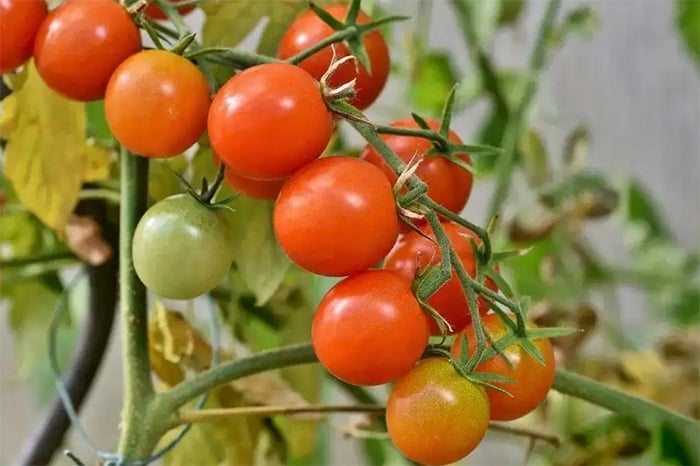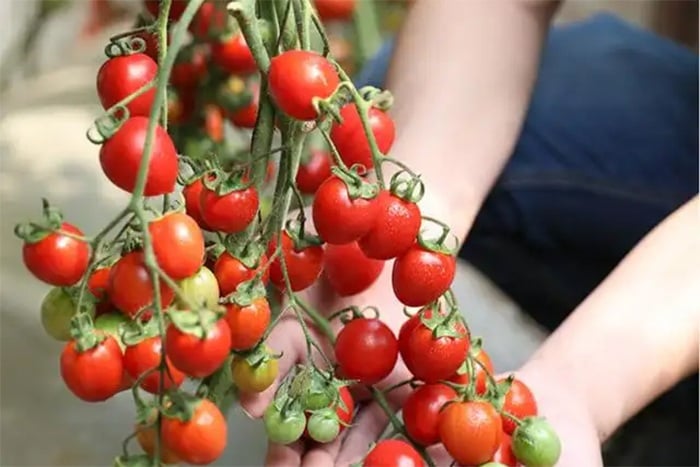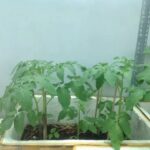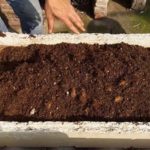Tomatoes are a rich source of vitamins C, carotene, and lycopene. They possess cooling and detoxifying properties, act as antioxidants, and help lower blood pressure. This versatile fruit is used in a variety of dishes, from salads to stir-fries, stews, and sauces.

Tips for Growing Tomatoes in Pots: A Bountiful Harvest
With concerns about food safety, many people opt to grow their own tomatoes to ensure quality. In addition to their culinary uses, ripe, red tomatoes add a decorative touch to urban homes.
How to Grow Tomatoes in Containers
Instead of buying tomatoes, try growing them yourself and enjoy the daily delight of watching them grow. Tomatoes are relatively easy to grow, and with the right care, they can produce an abundant yield even when cultivated in pots.
Choose the Right Variety
For container gardening, select dwarf or semi-dwarf tomato varieties that are space-saving and easy to manage. Options include yellow dwarf, cherry, and black tomatoes. If you prefer larger tomatoes, choose disease-resistant varieties that bear fruit early and offer high yields.
Visit a seed store and seek advice from the staff to find the best option for your needs.
Prepare the Right Container
The size, material, and drainage capacity of the container impact the growth and fruiting of tomatoes. Opt for a pot with a diameter of 30-40 cm and a depth of 25-35 cm to ensure sufficient soil volume and air circulation. Containers can be made of clay, plastic, or wood, ensuring there are enough drainage holes at the bottom. Line the holes with gravel or broken pottery to prevent waterlogging, which can cause root rot.
Use High-Quality Soil
Tomatoes thrive in well-aerated, soft, and porous soil with good drainage. Mix peat moss, coconut coir, and pearl stone in a 1:1:0.3 ratio. Enrich the soil with organic matter such as worm castings, bean dregs, and vegetable ash, or use slow-release fertilizers to provide long-lasting nutrients.
Planting Tomatoes
Choose healthy seedlings with 4-5 leaves, free from pests and diseases. Dig a hole in the potting mix, place the seedling, firm the soil around it, and water thoroughly. After planting, keep the pot in a shaded area for a few days to allow the plant to adjust, then move it to a sunny spot.
Watering
Water your tomatoes in the morning or evening to avoid water loss due to evaporation or leaf scorch from the midday sun. Use cool tap water, avoiding cold or contaminated water. Ensure you water the entire plant, not just the surface or a specific area. The frequency of watering depends on soil moisture and weather conditions. Generally, water when the topsoil dries out, without waiting for it to completely dry or for the plant to wilt. Increase watering during summer and reduce it in winter, being mindful of drainage on rainy days.
Fertilizing
Fertilization is crucial for tomato growth, requiring a balanced supply of nitrogen, phosphorus, potassium, and trace elements. Fertilize in the morning or evening after watering, avoiding direct contact between the fertilizer and the roots, which can cause root burn. Use liquid or water-soluble fertilizers, steering clear of unfermented or undecomposed organic matter.
The frequency of fertilization depends on the growth stage of the plant. During flowering and fruiting, use a multi-element fertilizer with balanced nitrogen, phosphorus, and potassium weekly. Switch to a fertilizer high in potassium once the fruits start to enlarge, applying it once a week.
Pruning
Pruning involves cutting the top and trimming the branches to control the growth and improve the quality of tomatoes. To encourage larger, riper fruits, choose the right time and position for pruning:
– Topping: Remove the highest point of the plant to control its height and redirect nutrients to fruit production. Keep 5-6 flower branches for container-grown tomatoes. After topping, side shoots will appear, which should be removed promptly.
– Flower removal: Pluck excess or inferior flowers to reduce the number of unripe or deformed fruits. Usually, the first flower cluster is weak due to the small size of the plant, low temperatures, or insufficient light, leading to flower drop or small fruits. Remove this cluster and retain the second one. Keep 5-6 flowers per branch and trim any excess to prevent overcrowding.
Provide Support
This step is crucial for container-grown tomatoes to prevent them from toppling over. As the plant grows taller, provide timely support to keep the fruits from bending the stem or touching the ground. Use bamboo stakes, wooden or plastic sticks, or metal rods as supports. Regularly adjust and reinforce the supports as the plant grows, ensuring they are firmly anchored in the soil.
Pest and Disease Control
Common issues with tomato plants include powdery mildew, gray mold, early blight, downy mildew, blossom-end rot, fruit cracking, aphids, red spider mites, and leaf-cutting insects. To prevent and control these pests and diseases:
– Select disease-resistant varieties with strong adaptability.
– Ensure good soil aeration and drainage to avoid waterlogging and drought stress.
– Provide adequate ventilation and light, avoiding high temperatures, high humidity, and overcrowding.
– Practice proper watering and fertilization to avoid overstimulating or starving the plant, leading to dryness or waterlogging.
– Promptly prune the tops, flowers, and auxiliary buds to remove diseased leaves and fruits, reducing sources and pathways of infection.
– Use physical or biological control methods, such as yellow sticky traps for aphids and vinegar sprays for red spider mites. Avoid chemical pesticides if possible.

Ensure Good Soil Aeration and Drainage
Pollination
Tomatoes are self-pollinating, but when grown indoors, they may lack natural pollinators like wind and insects. To improve pollination and fruit set, gently tap the flowers or stem with your finger or a cotton swab, allowing the pollen to fall from the anthers onto the stigma. Repeat this process 2-3 times for each flower.
For best results, pollinate between 10 am and 2 pm on the second day after the flowers open, as this is when the pollen is most active.
With proper care, you can expect to harvest tomatoes from your container garden two months after planting. At the end of the fruiting season, rejuvenate the plant by pruning and repotting to encourage new growth and another round of fruiting.
































